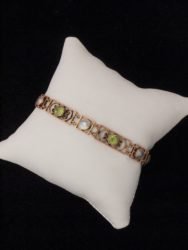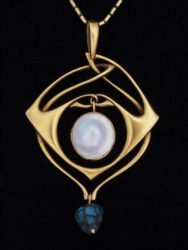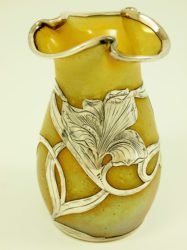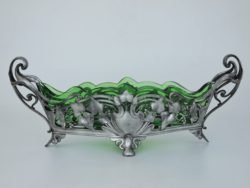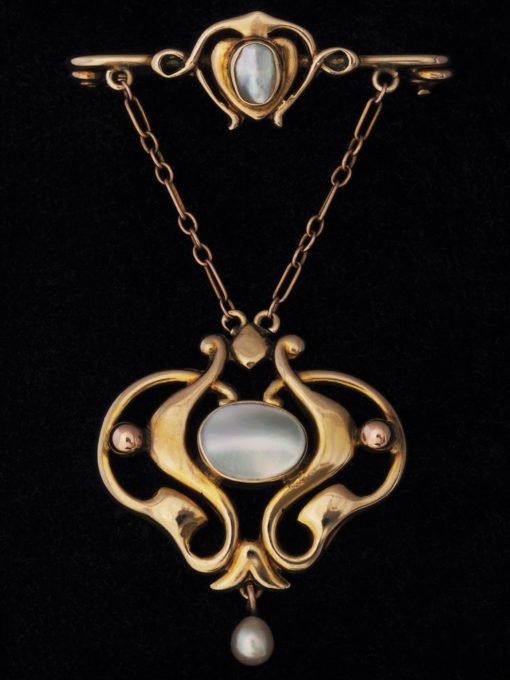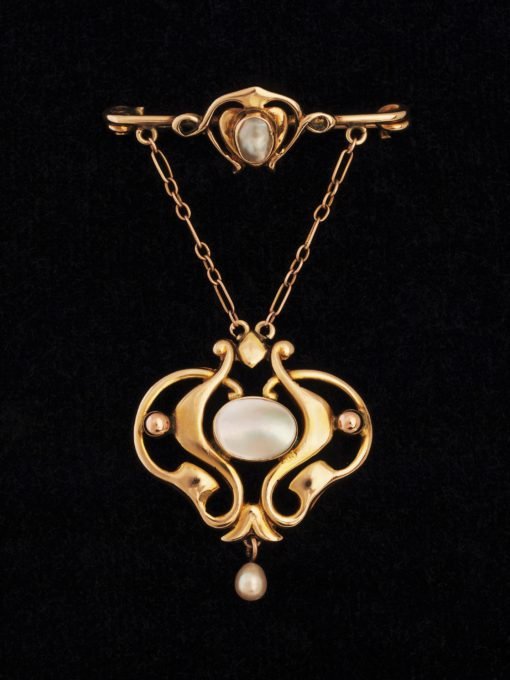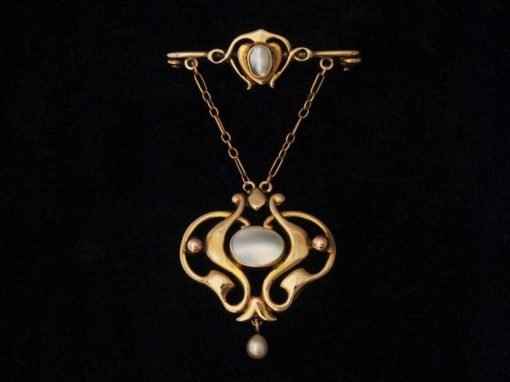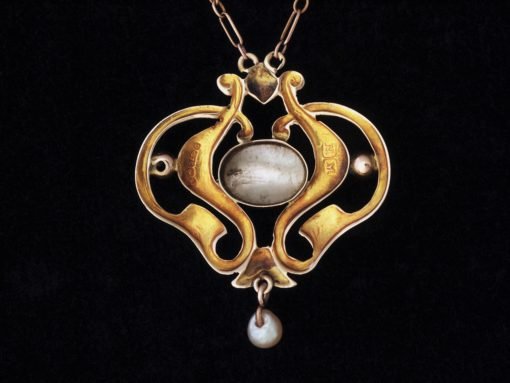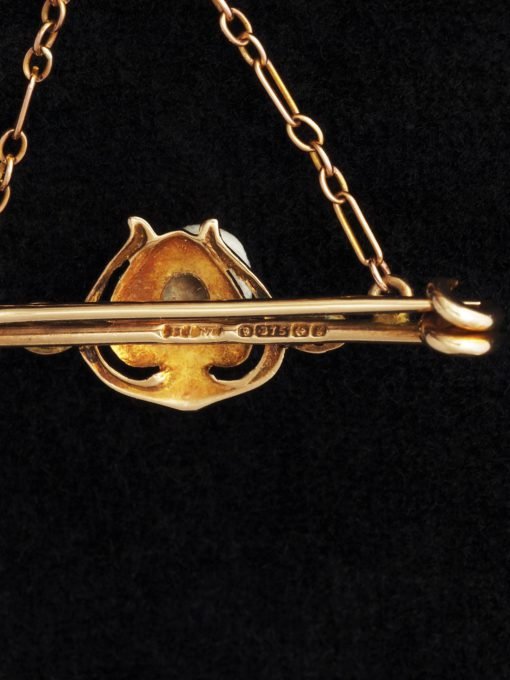Murrle Bennett Gold, Peridot and Mother-of-Pearl Bracelet*
Bracelet from Murrle Bennett crafted in 9 ct. gold, so very typical of the style of jewellery supplied by them to Liberty’s during the early 1900’s. Openwork in design with alternate rectangular and square sections,…
Archibald Knox Gold Pendant for Liberty
Gold pendant with an openwork entrelac design from the drawing board of Archibald Knox and dating from circa 1905. Set with a central blister pearl drop and with a turquoise matrix lower drop, this pendant…
‘Lady on The Seine’ by Dietz Edzard*
Ornately framed oil on canvas by the German born artist Dietz Edzard (1893-1963). This is an atmospheric half length portrait of an elegantly dressed young woman taking refreshment whilst seated on a verandah raised above…
Loetz ‘Candia’ Vase with Silver Overlay
Little cabinet vase from Loetz in opaque ‘Candia’ glass with a trefoil rim, further decorated with an applied Art Nouveau ‘Silberiris’ design in pure silver. Loetz collaborated with a company in the US known as…
WMF Flower Dish
Pewter flower dish from WMF with the original green cut glass removable liner. So Art Nouveau, with its flowing outline, featuring an openwork whiplash design framing leaves and berries of ivy. Originally electro-plated but most…
Contact Details
Tel: +44 (0)7802 872363
0345 6071772
Email: info@nouveaudecoarts.com
Art Nouveau Brooch by Henry Matthews*
Item Description
English Art Nouveau 9 ct. gold brooch by the Birmingham based goldsmith, silversmith and jeweller Henry Matthews who was professionally active between 1894 and 1930.
This stylish brooch comprises two linked components, the upper part showing sinuous gold wirework with a heart-shaped central feature enclosing a little mother-of-pearl disc.
Suspended on a pair of short chains, the main focal point is the lower section with its shaped outlineand very Art Nouveau sweeping design. Again, in the centre is a mother-of-pearl plaque and suspended beneath is a is a little pearl forming the drop.
The length is 6.5 cm and the width of the top section is 4 cm.
Clearly marked on the back of both parts and with a Birmingham hallmark for 1906.
